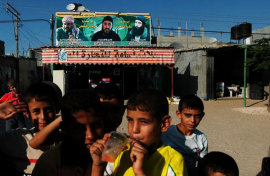
CULTURAL FICTIONS AND SYMBOLIC REALITIES
Negar Mottahedeh: Realism and Global Sense Perception
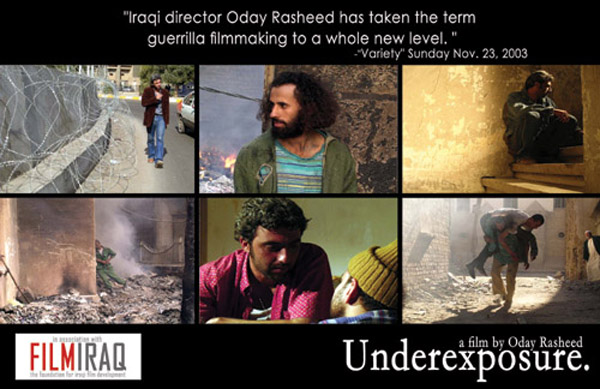
I am encouraged by Ananya's intervention to end the week's posts by reflecting on some contemporary feminist debates in Iran; debates around the question of representation in cinema. Listening to these debates, I am, in particular struck by the persistent evocation of the notion of realism and, in thinking self-reflexively, by the global demand for realism in representation. A recent Sunday Times Magazine article on the election of the Iranian President Ahamadinejad focuses on his "image maker" whose film about the modest then-mayor portrays a simple man who eschews the luxuries of his predecessors. "Asked if he thinks this was authentic," Javad Shamghadri, the president's visual arts adviser replies, "People can tell he is genuine. That's why they voted for him. The image corresponds to his true self." The image corresponds to his true self. ...Shamghadri's film about the mayor attracts the voting masses because of its realism, its realistic portrayal of a man who despite his humility is today the Iranian "President of the Apocalypse".
In watching the success of Iranian post-Revolution films in film festivals around the globe, critics repeatedly argue that the films depict unrealistic representations of Iran and its "way of life." Central to these critiques is the industry's problematic representation of women. In the Iranian context and increasingly in the West, a particular mode of critique introduced by Iranian feminists, articulates the shift from pre-Revolutionary cinematic depictions of women as "unchaste dolls" to the "chaste dolls" of the post-Revolutionary period. Shahla Lahiji's work on the representation of women in Iranian films is at the forefront of these critiques, suggesting that "the unchaste dolls" of the pre-Revolutionary cinema were banished from the cabaret stage and are now chastened and confined within the interior walls of the kitchen and engaged in domestic chores. It seems to me that while these critiques of stereotypical representations may be seen as progressive in the context of a national industry that is charged by its government to propagate proper standards for Islamic life through film, they become quite problematical as they make the rounds of international film festivals. What is key in this context is the critical appeal to realism once again. read more
Ryan Bishop: Total War and Total Images, or the Blind Originary Event of Peace
Total war, much as described through Negar’s quotations of a former US marine, entails a targeting of citizens. The rationale, as we all know, runs along the lines of the following: if every segment of a given society is mobilized in a war effort, as was the case during WWII and the Cold War, then any aspect of that society is a legitimate target for attack. During the British air raids on Germany, the strategy was called “dehousing the work force,” a nice euphemism for civilian targeting. The role of targets in urbanization and militarization, which cannot be separated from the movement of neoliberal markets and the deployment of information tele-technologies, is something that I have spent a good bit of time working on with my colleagues and friends Greg Clancey and John Phillips (as Under Fire 2 exhibited through Jordan’s kind auspices).
Negar’s evocation of images of the veils in relation to Reading Lolita in Tehran foregrounds the veil’s manifest polyvalence, or perhaps just good old fashioned double bind (as in, either veiled or unveiled, the women in countries that don veils somehow embody the stakes of long standing struggles regardless of their own desires). Within a specific representative regime, the veil is the target. I am reminded of the long reach of this targeting, a parabolic arc that takes us back to Homer’s Iliad. The word for veil and battlement in the ancient Greek are the same, so when Andromache stands on the city’s walls to see her husband’s body defiled in death being dragged through the dirt beyond the city gates, she removes her veil, letting it fall from her head and body, signifying the fall of the city walls as well. Both she and the city are undone. In a moment of terrible beauty, Homer brings the veil and battlement together, both as target. Both reveal the profound paradox of security. Only that which is valuable is protected, and that very protection draws attention – it attracts through the act of providing security. The defense itself is a lure. Defense and security undo themselves through their very enacting.
The veil has long become a target. Perhaps now, in an age of network-base warfare and total global surveillance, the screen functions rather a lot like a veil: a target of total war by total images.
The veil. The screen. The image. The target. Veils, screens, images, targets.
Nestled between prefix and suffix, the word veil resides in the very heart of the word surveillance. Though the etymologies of the terms come to English in largely unrelated ways, the role of covering and uncovering in surveillance is key to its operation, as well as to its self-defeating deployment. But perhaps more to the point, with the veil, we return to the question of epistemology and violence, for the veil and unveiling relate to truth as aeltheia, or truth as ongoing unconcealment. In the veil, as in the screen and the image, we find the material and immaterial means of thinking through the epistemology of violence. But I do not think we will find the means for engaging critically with epistemological parameters in them, nor am I convinced they exist in experimental art, though I wish they did. However, the latency mentioned by Wolfgang does adhere with a delay or lag that is found in the effects of the most powerful avant-garde art work of the early 20th century, much of which we find manifesting itself in contemporary military technology. One could not have predicted these effects at the time. We had to wait for the century to unfold, to reveal itself. So perhaps Wolfgang is looking in the right place. However, if there is a power in latency, in delay, in lag, in effect, then we will not and cannot foresee what the outcomes will be. If we can see that which will become the originary event of peace now, then that will not be the event later. It will have been veiled from the outset; we will have been blinded to it. read more
Caleb Waldorf: Ecologies of Suspicion
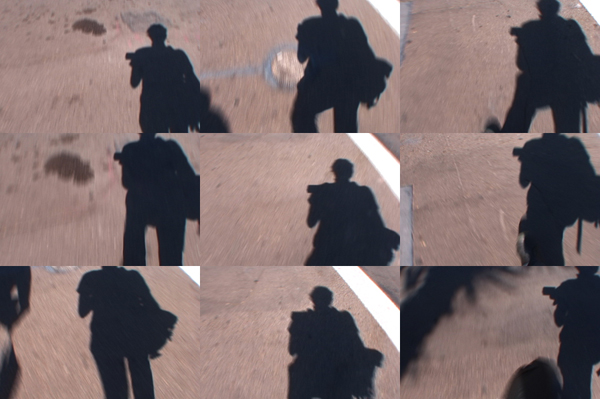
Scenario
You are on vacation. As any good tourist you have your camcorder and are filming everything in sight.
-cut-
You dump your video to your computer after arriving to your hotel. While watching the footage you notice that you accidentally left the camera running. It captured your shadow traversing the sidewalk and intersection as you crossed the street. You laugh at yourself, close your computer for the night to get ready for the long plane ride home tomorrow.
-cut-
At the airport you check your bags and prepare to go through inspection. You've worn slip-ons. Keys and change are stashed in your bag. You’ve already pulled your laptop out, and are ready to pass quickly through security. As you meet the first in a series of security guards your ID and boarding pass is held upright and ready. You smile innocently, if not somewhat guiltily waiting to be passed to the next step. The security guard tells you to go stand to the side and wait. Your boarding pass has been marked and you must go through further inspection. You are taken to a small cubicle and asked a series of questions. You explain that there must be some mistake, you were just on vacation and returning home. The officer ignores your claim and decides that he needs to look through your bag and your computer. He boots up your computer, and notices a movie file on your desktop titled "site-seeing.mov." He opens the file and begins to watch. read more
Negar Mottahedeh: Fruits of Total War
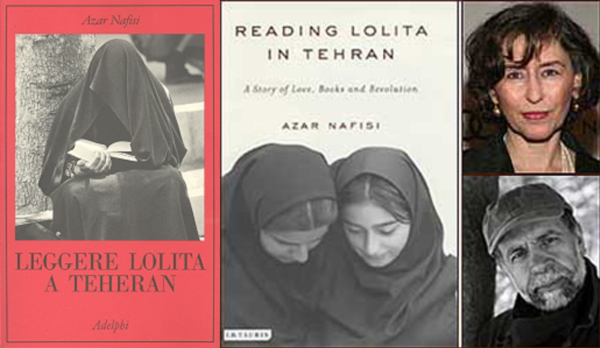
I wonder too about the question Radhika raises on constructing a response that expresses outrage. A response that does not at the same time parttake of zones of fear and terror, but also of zones of visual pleasure and fetishism I would add. How do we in the heart of the empire construct a response at all? I wonder at this as my US colleagues who work on Iranian Cultural and Literary Studies attempt to respond to the bravado surrounding Azar Nafisi's fictional memoir READING LOLITA IN TEHRAN -- a gesture that engrains the story of Iranian women in the call for total war.
In READING LOLITA IN TEHRAN the author of the fictional memoir, Azar Nafisi, reflects on her return to Iran after years of studying abroad. Her story is set during the course of the revolution and the first years of the Islamic Republic. Here Nafisi reflects on her work as a University professor in English literature in Tehran and on the ways in which the female body plays a pivotal and assertive role in the formation of the new Republic. Describing a city battered by war, she writes about the students who attended her classes during the 1980s and early 1990s to read "the great books" of the Western canon, including novels by Jane Austen, Henry James, F. Scott Fitzgerald and Vladimir Nabokov. Her goal of describing how her female students, sitting in the private study circle that she founded in 1995, identify their own plight with the plights of Lolita and Elizabeth Bennet is enough to capture one's interest. The writing, too, is gripping. Each of Nafisi's characters "glows on the page," one reviewer writes, "illuminated by Nafisi's affection." Most reviews of the book in the US press are comparably fervent and enthusiastic. "Reading Lolita in Tehran had a most unusual effect on me," writes another reviewer. "I didn't want to be interrupted, so I canceled a dental appointment and a business lunch and missed a deadline. I read and read and ignored the world. This is what brilliant books will do; they seize you until the story is over." read more
Ananya Vajpeyi: RE: Image as Event
The paintings -- some of them based on photographs -- along the Sadr Freeway in Tehran, are, taken together, an act of witnessing as well as an exhortation to fight the good fight. Here is the fact of injustice, they seem to say; here is the recent history of American aggression against the Muslim world: Yesterday Palestine, Today Iraq, and as Negar and her respondents all suggest, Tomorrow Iran.
But Iran's future, as prophesied in two of the frames, need not be one of abjection -- it need not resemble the tortured bodies of the prisoners of Abu Ghraib, nor the dead or grieving bodies of the citizens of Palestine. It need not even resemble the soldiers at war in the final frame, perhaps reminiscent of the Iran-Iraq conflict which devastated both countries in the 80s.
For Iran's future, if it were to draw on the resources of Shia history, could recall and recreate the just war of Imam Ali, the noble martyrdom of Imam Hussayn, the battlefield of Karbala where what unfolded was internal to Islam and ultimately cleansed and ennobled all Muslims equally. Iran could be the enemy of American tyranny, and support the victims -- Iraqis, Palestinians, perhaps also the unrepresented Afghans -- of American injustice, rather than becoming victimized in its turn.
The frames, taken together, challenge the inevitability of Muslim defeat at the hands of American imperialism. At the centre of the sequence is a depiction of Mecca and a quotation attributed to Imam Ali, the son-in-law of the Prophet Mohammed: the holiness of both, the site and the personage, acts as a bulwark against what everyone fears is the impending occupation of Iran. read more
But Iran's future, as prophesied in two of the frames, need not be one of abjection -- it need not resemble the tortured bodies of the prisoners of Abu Ghraib, nor the dead or grieving bodies of the citizens of Palestine. It need not even resemble the soldiers at war in the final frame, perhaps reminiscent of the Iran-Iraq conflict which devastated both countries in the 80s.
For Iran's future, if it were to draw on the resources of Shia history, could recall and recreate the just war of Imam Ali, the noble martyrdom of Imam Hussayn, the battlefield of Karbala where what unfolded was internal to Islam and ultimately cleansed and ennobled all Muslims equally. Iran could be the enemy of American tyranny, and support the victims -- Iraqis, Palestinians, perhaps also the unrepresented Afghans -- of American injustice, rather than becoming victimized in its turn.
The frames, taken together, challenge the inevitability of Muslim defeat at the hands of American imperialism. At the centre of the sequence is a depiction of Mecca and a quotation attributed to Imam Ali, the son-in-law of the Prophet Mohammed: the holiness of both, the site and the personage, acts as a bulwark against what everyone fears is the impending occupation of Iran. read more
Radhika Subramaniam: RE: Image as Event
Yesterday Palestine. Today Iraq. I, like Susan Charlton, can’t help but read it as saying: Tomorrow, it will be us. And what does that warning (hope to) achieve? To follow on Negar's closing comment, what is Tehran’s pre-occupation?
What I can see a glimmer of here is what strikes me continually in my New York world and that is the wagging finger that governs our daily life now. That warns and threatens and keeps us confused, suspicious, careful and obedient. Surveillance, ID cards, fingerprinting, toothpaste gels – yes, from the video camera in a bank to what I use on my teeth – are all part of this fantastical construction of fear and control. I have learnt to press my index finger hard at the airport counter knowing my prints never show up at the first try. I no longer rail against building regulations that ask Carlos to greet me by name while refusing me entry to my office because I can’t find my ID in my bag. For so many living in the U.S. there is just the enormous, dare I say, silly, web of poking and prodding that transform the everyday – and it seems that it is really for this, after all, that havoc is being wreaked half way across the world. For this “security” which now serves as a substitute for peace. Can anyone really speak of “peace” anymore – the sort of peace whose originary affect is compassion, as Bracha Ettinger suggests? The sort of peace based on reciprocal knowledge, even a churlish tolerance. Of course, there are more violent systems of policing – the detentions, renditions, surveillance – that are but a step away. I have often wondered how one sort of terror and violence (arbitrary searches) comes to substitute for another sort of terror (al-Qaeda) while making invisible the experience of that substitution. Why aren’t we horrified? Why aren’t we terrified? And I can’t help but feel that a component of it lies in these asinine daily rituals which confirm our participation in the broad network of policing – as the policed – which then allows a certain smugness to paper over what could have been that horror of what is taking place. read more
What I can see a glimmer of here is what strikes me continually in my New York world and that is the wagging finger that governs our daily life now. That warns and threatens and keeps us confused, suspicious, careful and obedient. Surveillance, ID cards, fingerprinting, toothpaste gels – yes, from the video camera in a bank to what I use on my teeth – are all part of this fantastical construction of fear and control. I have learnt to press my index finger hard at the airport counter knowing my prints never show up at the first try. I no longer rail against building regulations that ask Carlos to greet me by name while refusing me entry to my office because I can’t find my ID in my bag. For so many living in the U.S. there is just the enormous, dare I say, silly, web of poking and prodding that transform the everyday – and it seems that it is really for this, after all, that havoc is being wreaked half way across the world. For this “security” which now serves as a substitute for peace. Can anyone really speak of “peace” anymore – the sort of peace whose originary affect is compassion, as Bracha Ettinger suggests? The sort of peace based on reciprocal knowledge, even a churlish tolerance. Of course, there are more violent systems of policing – the detentions, renditions, surveillance – that are but a step away. I have often wondered how one sort of terror and violence (arbitrary searches) comes to substitute for another sort of terror (al-Qaeda) while making invisible the experience of that substitution. Why aren’t we horrified? Why aren’t we terrified? And I can’t help but feel that a component of it lies in these asinine daily rituals which confirm our participation in the broad network of policing – as the policed – which then allows a certain smugness to paper over what could have been that horror of what is taking place. read more
Allan Siegel: Image as Event 2
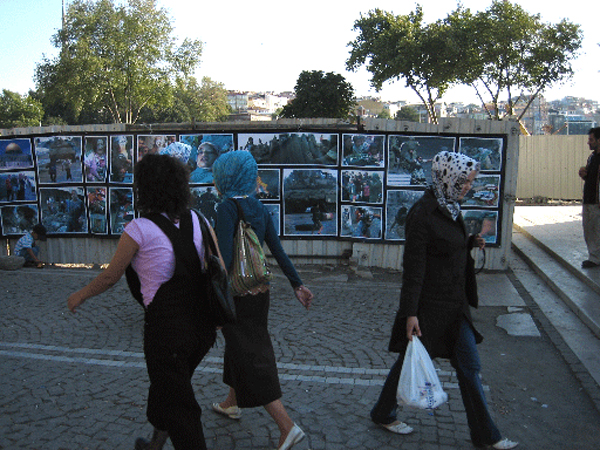
"The threat of Terrorism just does not have the magnitude of effect on the imagination that the Cold War did, particularly as there was no evidence of either wmd or collusion with Al queda. The mask was tron from the Official Story earlier than it was with Vietnam." from Linda Robertson is a bit off the mark. The 'threat of terrorism' not only has an 'effect on the imagination' but a very real impact on day-to-day realities. The use of a 'terrorist threat' strikes a very visceral chord in most people (in many parts of the world) especially when increased surveillance, body searches, and many other form of abrasive intrusions occur to disrupt ordinary daily routines. The re-invoking, re-modeling of 'the terrorist threat' is very much attached to (as we all know) a political agenda - previously we had the Saddam is Hitler construct. Remember that Reagan said the Sandinistas were going to invade Texas - an earlier version of the 'terrorist threat.'
The 'threats' grounded in the Cold War imaginary evolved over a period of time whereas the present-day 'terrorist threat' is a mantra that has been chanted most strongly by heads of state in Washington and Israel. This has the effect of neutralizing (and obfuscating) the imagery as well as masking the harsh political objectives associated with the Iraq War/s, the Lebanon incursion and the occupation of the West Bank. read more
Negar Mottahedeh: Image as Event
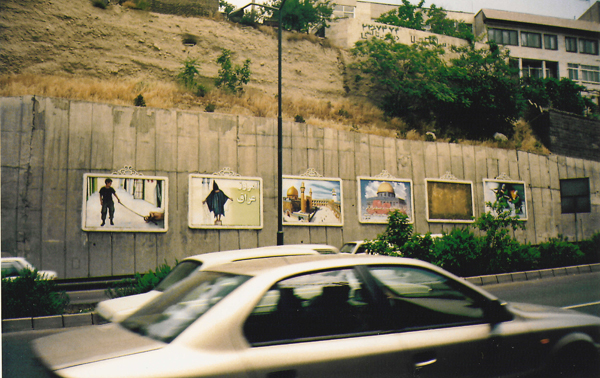
I would like to begin my presentation this week where Melani McAlister left off: on the spectacle of Abu Ghraib. Here, with a series of images that I captured with my camera as we were driving along the Sadr freeway in Tehran two summers ago. The following is an excerpt from a piece I wrote on the presence and role of the photographs from Abu Ghraib in Tehran : -------------
Air-conditioned transportation in Tehran is notoriously difficult to find. For pampered visitors such as the cultural anthropologists and documentary filmmakers from New York and Los Angeles who seem to converge on the Iranian capital every summer, a cool taxi ride to the northern parts of town recalls something of the charmed life they left behind in the United States, a life some refer to offhandedly as "the grid."
Being on the grid, it seems, is something akin to having a non-Iranian passport or a green card, multiple credit cards loaded with debt, a laptop with a 24-hour DSL connection, satellite television in an air-filtered apartment, impeccably pedicured feet in open-toe sandals, a single Gauloise cigarette ashing in a saucer next to that daily injection of coffee and money earned from a steady job. This is not to say that some of these components of the grid are not available in Tehran. They are. Apartment complexes in the northern parts of town, like Shahrak-e Qarb, also provide residents with hilly, green outdoor spaces where a woman can walk her dog without the government-prescribed full body covering and headscarf. Such private complexes come with in-house supermarkets, boxed meals delivered to your door and a doorman who will call a taxi and announce visitors just as he might at a one-bedroom pad in New York. In Tehran, all this comes to about $500 a month. read more

